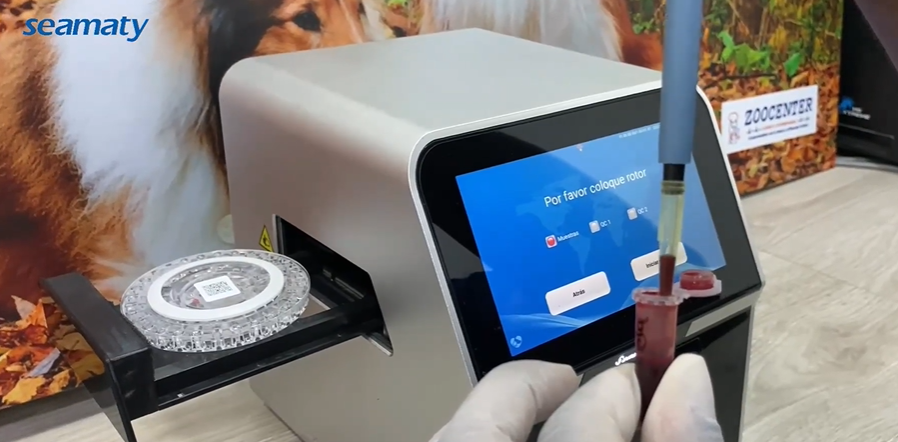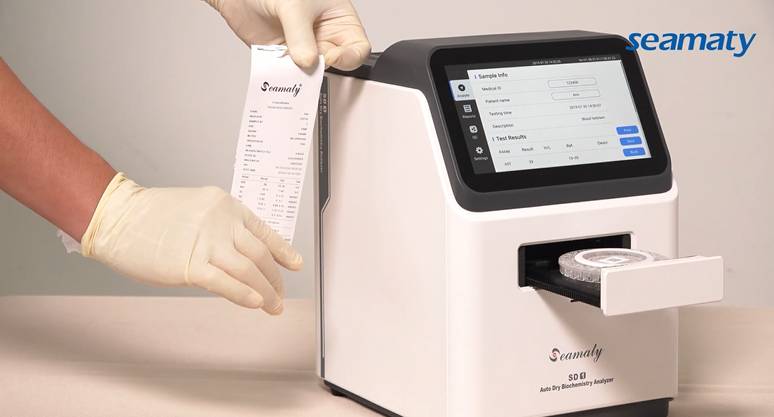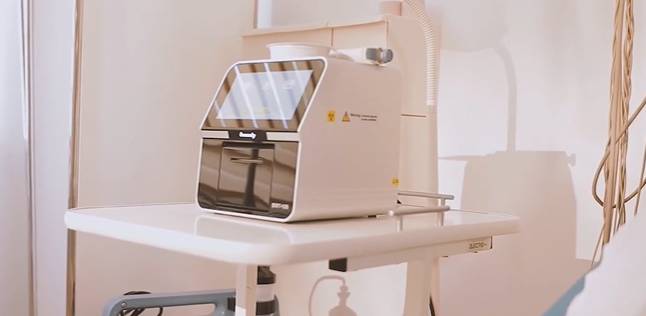Biochemical tests can provide great convenience to doctors in diagnosing diseases. A
biochemistry analyzer is the doctor's eye, able to detect and calculate the levels of various chemicals in the blood. Biochemistry analyzers can be divided into
dry and wet biochemistry analyzers. There are many factors that can affect the results of a biochemistry analyzer. Haemolysis is a common cause. The effect of haemolysed samples on the results of a dry biochemistry analyzer is discussed below.
Dry chemistry analyzer principle
Dry chemistry uses a solid phase reagent technique with a multilayer film. A liquid sample is simply added directly to a reagent carrier that has been solidified in a special structure, i.e. the reagents of dry chemistry. Using the water in the sample as a solvent, the reagents cured in the carrier are dissolved and then react chemically with the components to be tested in the sample, thus performing an analytical determination to give the concentration or activity of the object to be tested.
What is haemolysis in biology?
Haemolysis is one of the most common interfering and influencing factors in clinical biochemical tests. Commonly, certain intracellular components released by the destruction of blood cells such as red blood cells, platelets and leukocytes interfere with or affect the determination of clinical biochemical parameters. If the concentration of an analyte in leukocytes is significantly higher than in plasma, haemolysis will undoubtedly lead to an increase in the concentration of that component in plasma, making the assay higher than the true value.

What causes haemolysis?
There are two main reasons why specimen haemolysis affects biochemical tests.
1) The difference in concentration of the fluid inside and outside the red blood cells. The concentrations within the red blood cells are significantly higher than those in the plasma: AST, ALT, K+, CK, etc.
2) Hemolysis of the specimen. Various reactions between the intra- and extracellular fluids affect the test results. Although the dry chemical method has a special gel film attached to its dry sheet coating, which has selective filtering and adsorption effects on interfering substances. However, haemolysis of the specimen affects almost all biochemical results, especially for items such as ALT, AST and TBIL. While it is important that the biochemical test results can truly reflect the actual situation in the patient's serum.
Haemolysis can be divided into in vitro haemolysis and in vivo haemolysis.
In vitro haemolysis can be caused by physical factors (e.g. mechanical damage, freezing, etc.), chemical factors (e.g. exposure of blood samples to surfactants) and metabolic factors (e.g. increased blood cell fragility due to genetic disorders).
In vivo haemolysis can be caused by physical factors (e.g. artificial heart valves), biological factors (e.g. malignant diseases) and toxic reactions to drugs.
The main difference between in vitro and in vivo haemolysis is that the former is a parallel increase in plasma or serum Hb with LDA and K+. In the latter, plasma or serum Hb and LDH are usually elevated, while K+ is not. In vitro haemolysis is overcome on the one hand by standardisation of sample preparation techniques. On the other hand the interference of haemolysis can be overcome and reduced methodologically. The only solution to haemolytic interferences, which are part of the chemical reactions involved in their analysis, is to change the type of all reagents and to improve their composition.
How to avoid hemolysis during blood collection?
To minimise the occurrence of haemolysis, the following points should be noted.
-
1) Blood collection instruments including syringes, needles and test tubes are kept clean and clear during the blood collection process. Syringe needles should not be disinfected with alcohol as alcohol can cause haemolysis.
-
2) Do not tie the pulse strips too tightly or too long. Blood should not be injected into the test tube too quickly to avoid rupture of blood cells caused by excessive blood bubbles.
-
3) Blood should not be stored in the freezer to avoid melting and causing haemolysis.
-
4) Blood should not be left for too long to prevent disinfectant or other substances from dripping into the specimen and haemolysis will affect the test results.
-
5) Where conditions permit, haemolysed specimens should be requested to be re-collected in order to improve the accuracy of the test results.
The above is the impact of haemolysis on biochemical test results and how to reduce haemolysis. I hope it will be helpful to you.



